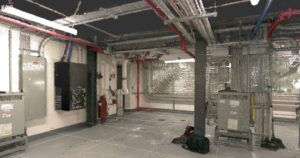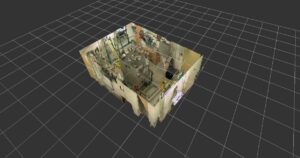LiDAR 3D Scanning for Optimal Design Integration
LiDAR (Light Detection and Ranging) technology has revolutionized the way engineering projects are executed, particularly in the realm of 3D scanning for various applications such as Scan to BIM (Building Information Modeling). By utilizing LiDAR, engineers can capture highly accurate and detailed data of existing conditions on-site, facilitating the creation of precise digital models for analysis, design, and planning.
Scan to BIM, or the process of converting LiDAR scans into Building Information Models, offers numerous benefits for engineering projects:
- Accurate Digital Representation: LiDAR scans provide highly accurate 3D representations of existing structures and environments. This data includes detailed information about the shape, size, and spatial relationships of objects within the scanned area. By incorporating this data into BIM software, engineers can create digital models that faithfully represent real-world conditions.
- Optimized Design Process: LiDAR scans optimize the design process by providing engineers with comprehensive data on existing conditions. This allows for more informed decision-making during the design phase, as engineers can accurately assess factors such as spatial constraints, structural integrity, and building systems. By identifying potential issues early in the process, engineers can mitigate risks and optimize designs for efficiency and effectiveness.
- Measurements Without Physical Access: LiDAR scans eliminate the need for physical access to the site for taking measurements. This is particularly advantageous in situations where access may be restricted or hazardous. By capturing detailed data remotely, engineers can accurately measure dimensions, distances, and other parameters without the need for on-site visits, reducing project time and costs.
- Future Reference and Documentation: The digital models created from LiDAR scans serve as valuable documentation for engineering projects. They provide a comprehensive record of existing conditions at a specific point in time, which can be referenced throughout the project lifecycle. This documentation is particularly useful for renovation projects, as it allows engineers to accurately assess changes over time and plan accordingly.
- Enhanced Visualization and Analysis: LiDAR scans enable engineers to visualize and analyze complex structures and environments in greater detail. By incorporating this data into BIM software, engineers can conduct advanced simulations, perform clash detection, and evaluate design alternatives with greater precision. This enhances the overall quality of engineering projects and helps ensure that designs meet performance requirements.
LiDAR 3D scanning plays a crucial role in engineering projects by providing accurate, detailed data of existing conditions that can be used to create optimized digital models for analysis, design, and planning. From Scan to BIM workflows to enhanced visualization and analysis capabilities, LiDAR technology offers numerous benefits that streamline the engineering process and improve project outcomes.

